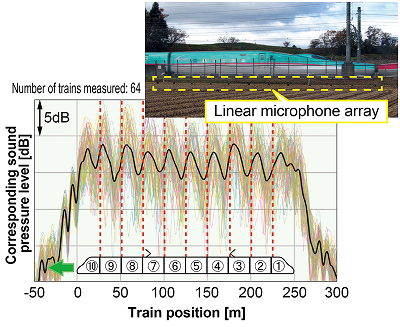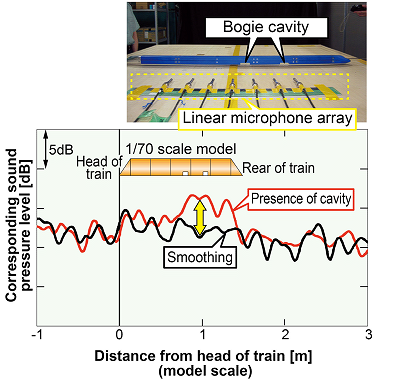20. Development of method for measuring and evaluating low-frequency aerodynamic noise and clarification of noise sources
In an effort to maintain the trackside environment whilst at the same time gradually increasing the speed of Shinkansen trains, one key task is to contain pressure fluctuations in open sections. Pressure fluctuation is the combination of the aerodynamic effect produced by the middle part of a train (low frequency aerodynamic noise) and structure-borne sound. Until now however there was no clear method to measure and evaluate low frequency aerodynamic noise, and the source of the noise was also not known. Consequently, a method was devised to select appropriate on-site test conditions in order to measure and evaluate low frequency aerodynamic noise using a linear microphone array based on a noise source separation. A test site on an open, flat track section without noise barriers was used to verify the new method. Results of measurements on more than 16 trains demonstrated that it was possible to pick up separate sound sources with an accuracy of ±1dB, and that spatial identification was also more accurate. These tests also helped identify the source of low frequency aerodynamic noise as being in the vicinity of the bogie (Fig. 1).
Further work was carried out to develop a method for conducting tests using a train model launched at high speed to reproduce aerodynamic noise emitted from around the bogie in laboratory conditions. The measurement and evaluation method developed for on-site tests was adapted for the laboratory trial, clarifying that the low frequency aerodynamic noise as observed in on-site tests emanated from the cavity beneath the carbody containing the bogies (Fig. 2).
The successful results obtained in laboratory conditions mean that concrete low frequency aerodynamic noise mitigation measures can be tested with the model. Selected measures can then be verified in on-site tests and evaluated for effectiveness when applied to actual trains.


